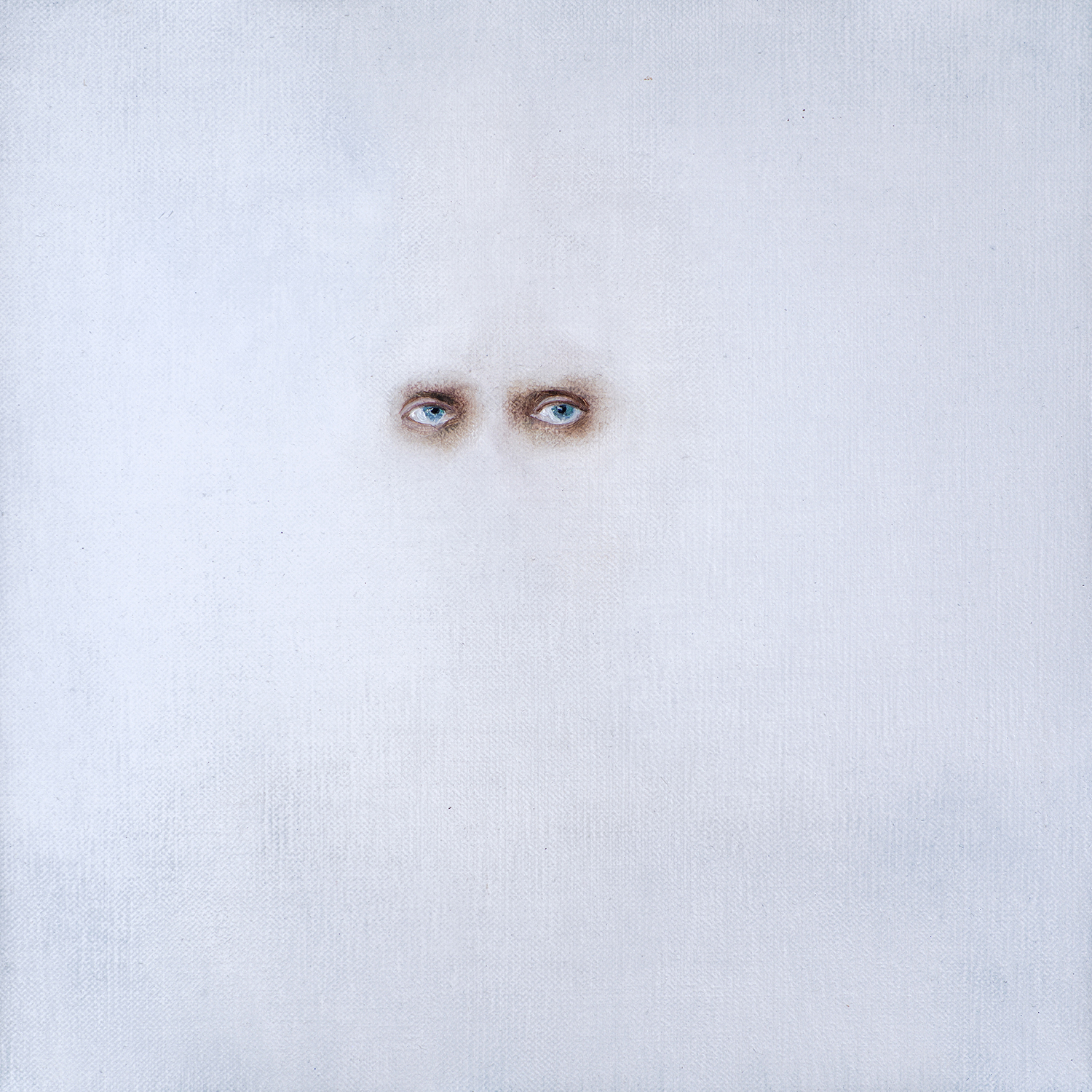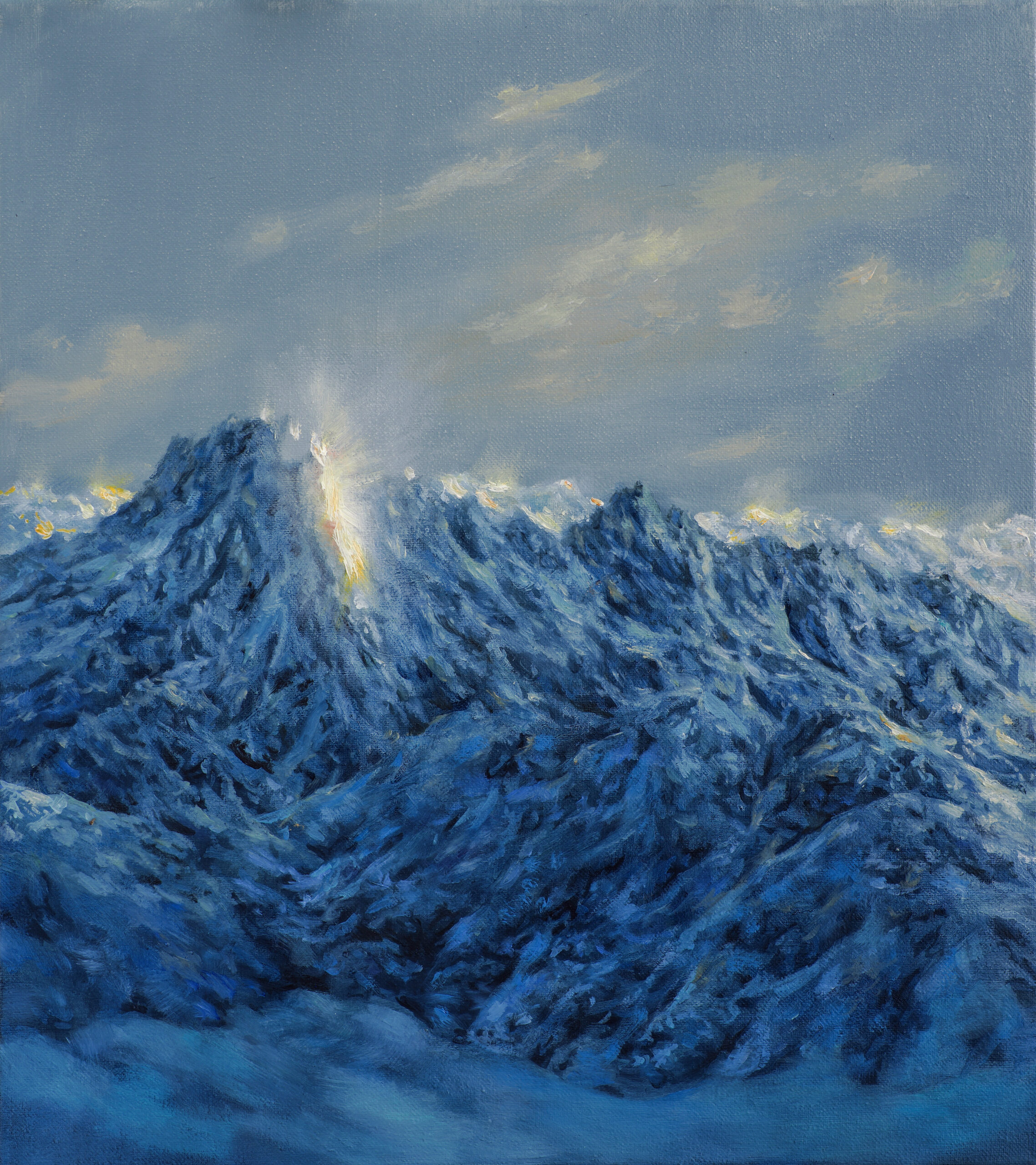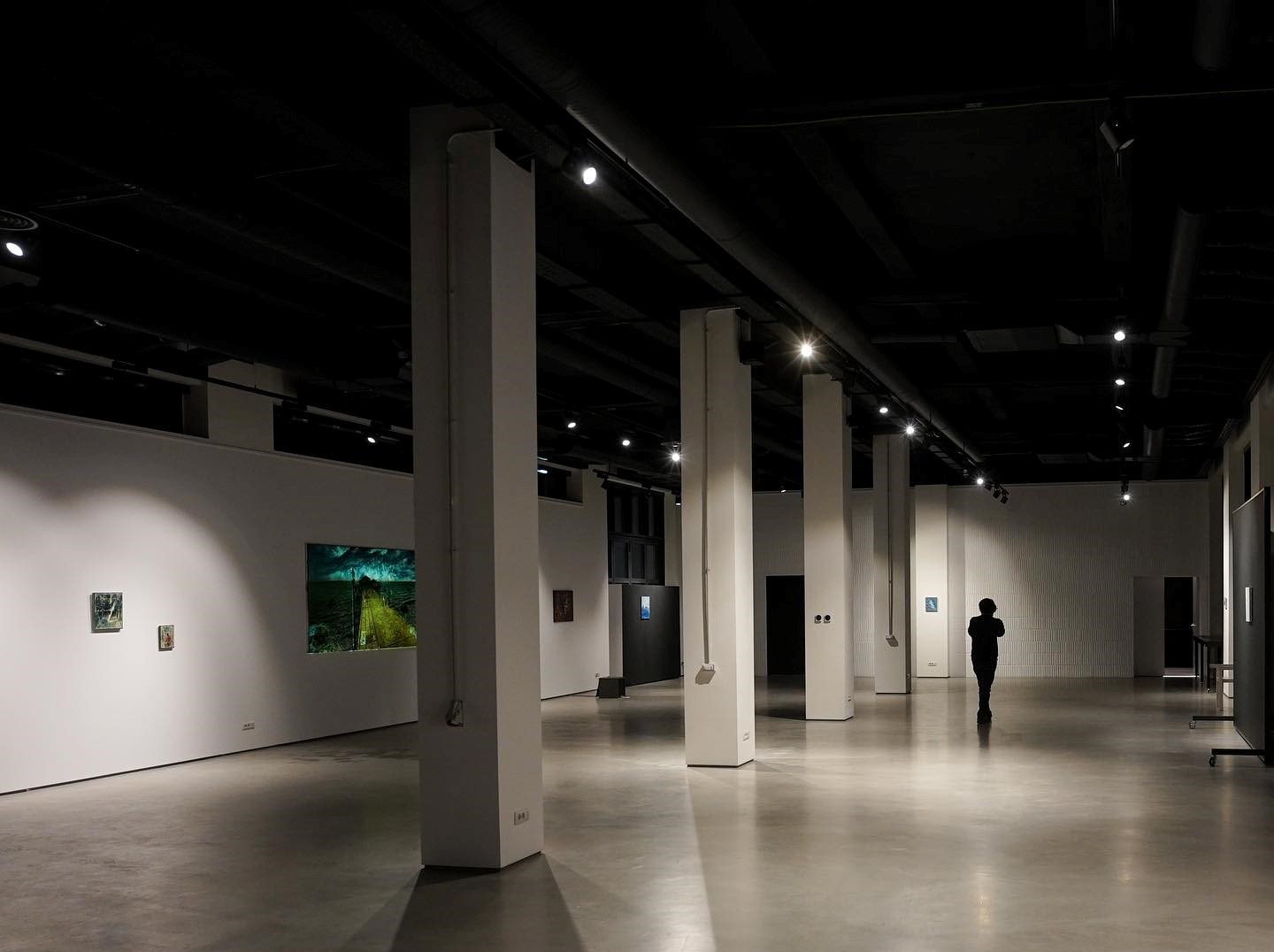In their first collaboration, two contemporary art galleries from Bucharest—Mobius and Strata—have recently opened an exhibition featuring new works by Andrei Gamarț, including four new media installations. The artist blends traditional painting with a series of live projections sourced from surveillance cameras placed in different parts of the world and accessible online, offering viewers a unique experience where both the narrative and emotional threads—triggered by direct interaction with the artwork—are continuously influenced by shifts in atmosphere on the other side of the globe.
Gamarț’s most recent works signal a shift in the theme he has explored over the past decade. He moves away from complex and timeless subjects—such as the memory of light or the relationship between light, memory, and matter—towards a concept that, although present since the dawn of human consciousness, is now more than ever connected to the current state of the world: that of waiting. Although we live in an age of immediacy and the instantaneous, the global events of the past three years have forced the world to slow down and altered the dynamics of daily reality.
We are living in a paradoxical age: theoretically, we gain more time thanks to technology, yet in practice, we are trapped in a constant state of temporal scarcity. We undoubtedly live in a technologically accelerated era, defined by the mark of immediacy, where everything is just a click away, and the time we spend waiting in many aspects of life has significantly diminished. Consequently, we’ve lost the ability to wait—because our tools have changed and have given us a new environment: one of life lived in the instant. The attention we crave is available to us 24/7. We have instant access to information. We are perpetually updated on everything happening around the globe. Our ability to concentrate is plummeting, while we struggle to know everything, to gain validation, to be seen, to be noticed, and above all—to be everywhere.
And all of this is happening simultaneously, within an extremely narrow temporal window.
We lose patience because we feel we are losing time. The result is an incapacity to wait. We no longer even know how to wait.
Still, the recent events that have shaken our world—from the unpredictable disruption of the pandemic to the generalized anxiety triggered by unexpected military conflicts that threaten to engulf the world even as we read these lines—have forced humanity to change its pace and reexamine the notion of waiting. On the surface, our lives appear to continue, but on a deeper level, we are all holding back from making long-term projections, waiting for something significant to happen—something momentous enough to shift the current narrative structure.
Waiting is not an easy practice when you’re no longer accustomed to it. It’s already difficult for us to appreciate—or even recognize—the positive aspects of waiting. In a study published under a highly evocative title, Delayed Response: The Art of Waiting from the Ancient to the Instant World (Yale University Press, 2018), American author Jason Farman highlights the many layers of meaning within the act of waiting, which he defines “not as a burden, but as a vital trait of human connection, intimacy, and learning.”
Combining traditional oil-on-canvas painting with new media installations that project live images from surveillance cameras placed around the globe, Gamarț’s approach to the subject is not necessarily direct. His works draw the viewer into more than a visual story, inviting them to decode the emotional architecture of a complex state that generates a range of feelings—from impatience and excitement to boredom and despair. In the artist’s own words, waiting is not necessarily an action, but rather a sense, much like sight or hearing. It’s like a sixth sense tied to the future that awaits us—a weightless state, full of emotion and tension at once, like a dream you’re caught in with no way out.
Gamarț’s works are not the easiest to look at; his paintings are unsettling and intense from any angle, and yet they fascinate, leaving the viewer with the lingering sense that the story is always more complicated than it seems. There is something compelling in the way the artist layers visual narratives, full of unexpected turns that lead to different scenarios, even if, on the canvas, they appear to weave into a single narrative thread. Gamarț offers us clues to what we’re missing, caught up in our relentless race through—and for—life. Surprisingly, what we end up missing is ultimately something essential.
The six video-painting installations immerse us directly in a state of waiting, as the live projections alter each artwork’s narrative from one second to the next. In this way, the viewer’s experience becomes a continuous process of discovering new facets, new meanings, and new possibilities for interpretation—all different, yet all born from the same narrative core.
Mihai Zgondoiu
↳ ARTISTS
↳ CURATOR
↳ SCHEDULE
Exhibition open 04.11 - 04.12
Wednesday to Friday from 3pm to 8pm
Weekends by appointment
this

↳ Details
↳ Tags
and that




